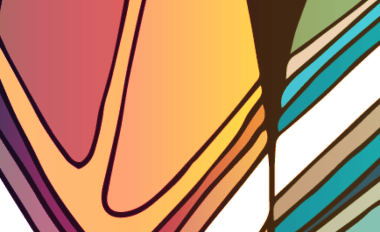Language places you within society, it also tells you of the lores, tells you of your stories, and it’s your spiritual connection to Country as well.49
Before the start of colonisation there were around 40 Aboriginal languages spoken in Victoria. They were (and are) connected to Country. For example, languages from Country located along the coastline had complex references to marine systems.50
Colonisation caused many of these Aboriginal languages to go into decline. Complex language systems that had developed over thousands of years, were no longer regularly spoken. The Victorian Aboriginal Corporation for Languages (VACL) was established in 1994. VACL works in language revitalisation by retrieving, recording and researching Victorian Aboriginal languages. They are the peak body for Victorian Aboriginal languages. They assist local communities in their language revitalisation plans. They run language camps, workshops, school programs and networking events. They create language resources (including digital resources and dictionaries), publications and music.
Language is an Ancestral right…Language contributes to the wellbeing of Aboriginal communities, strengthens ties between Elders and young People and improves education in general for Indigenous People of all ages.
One such project is the digitisation of Gunai/ Kurnai story books. In this project six Gunai/ Kurnai Story books are being converted into digital storybook apps.
They are also involved in languages programs in schools, including the Robinvale P-12 College, Thornbury Primary School and Healesville High School.
The Victorian Curriculum and Assessment Authority (VCAA), collaborated with the Victorian Aboriginal Education Association Inc (VAEAI) and VACL to create the Marrung Aboriginal Education Plan (2016 – 2026) and Victorian Curriculum Foundation-10: Victorian Aboriginal Languages curriculum.
Victorian government schools are also required to comply with the Koorie Cross-Curricular Protocols for Victorian Government Schools.
In Victoria language revitalisation is an on-going process. Language and culture is living and is practiced on a daily basis. Language revitalisation work continues, in part through the success of the Certificate III in Learning an Endangered Aboriginal Language and Certificate IV in Teaching an Endangered Aboriginal Language.
2019 was the International Year of Indigenous Languages and PULiiMA, Australia’s Indigenous Language and Technology Conference, had its biggest year yet with over 600 delegates attending, 120 presenters, 25 intensive workshops and 30 exhibitors.51 In the same year UNESCO and the government of Mexico, in co-operation with regional, national and international partners, agreed to the Los Pinos Declaration recognising 2022-2032 as the International Decade of Indigenous languages.52
Discussion question: In what ways does language revitalisation, strengthen culture?
- What can be done to further revitalise languages in Victoria?
- What can be done to ensure that Aboriginal Peoples manage and control use of language in Victoria?
- What empowers intergenerational transmission of language?
Updated

